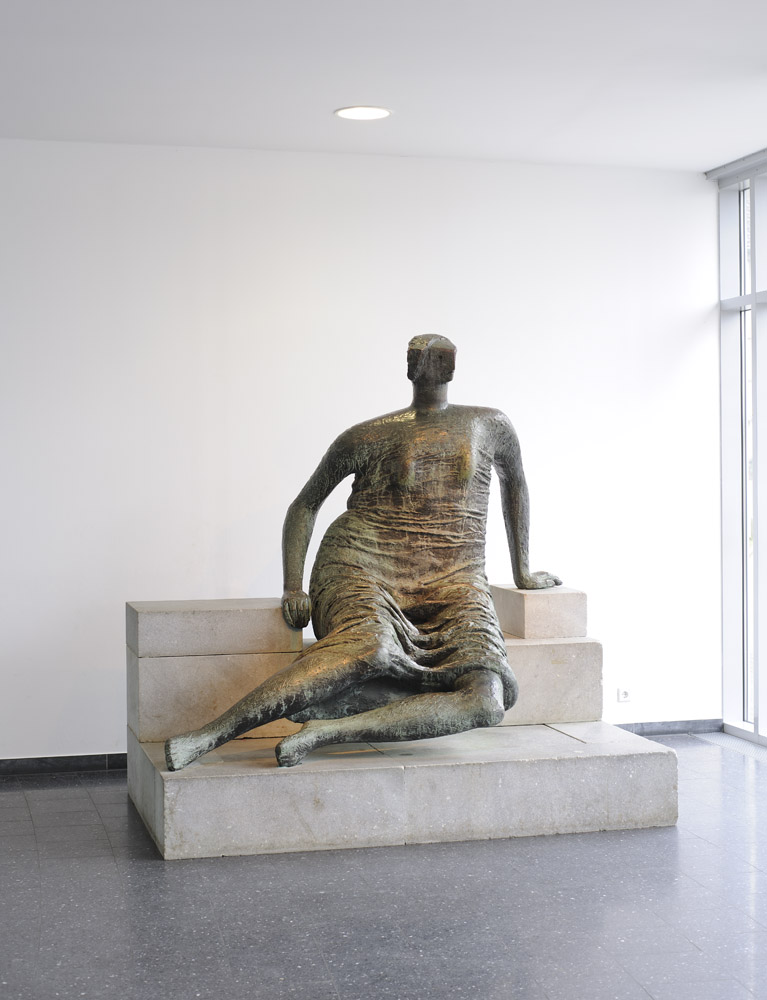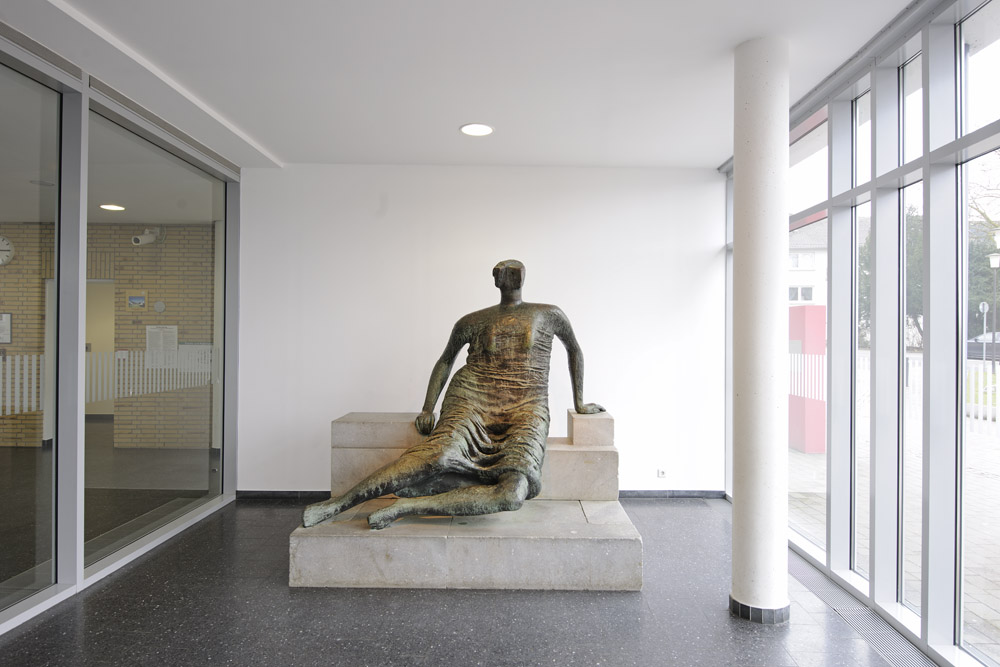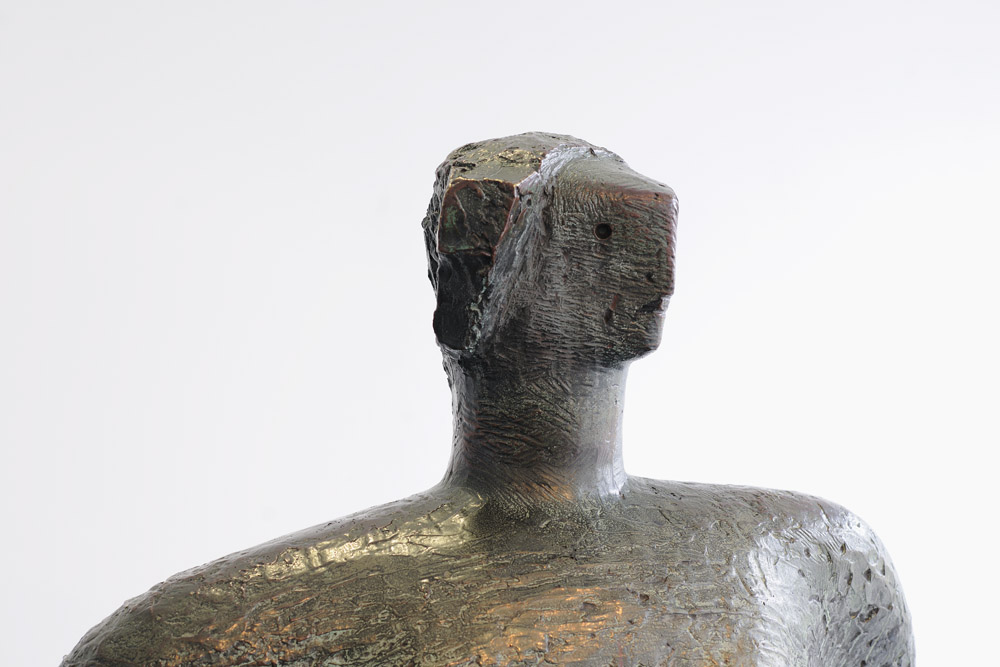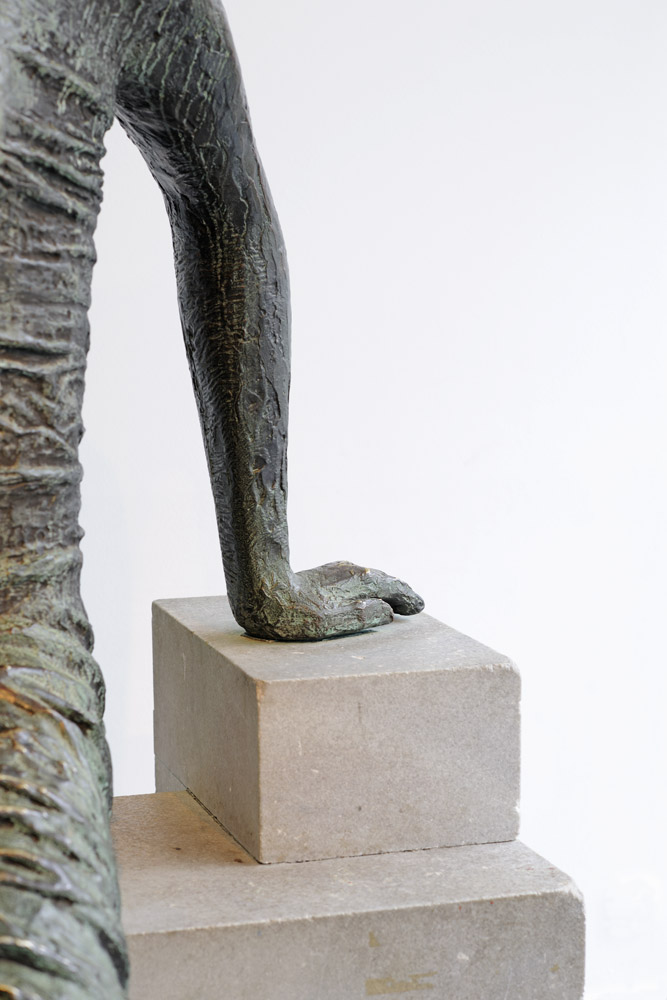Draped Seated Woman





Already an internationally renowned sculptor, Henry Moore was asked to design a work for the Südgarten. After a viewing the site, he suggested a figure that he had already designed, but not yet realized. Inspired by classical art and a 1951 visit to Greece, Moore created the formidable draped female figure. The motif of the mounted female figure continued throughout all of his future work in increasing stages of abstraction. Carmen Klement (Von der Heydt Museum) writes on the history of the sculpture:
“The bronze sculpture cast in France’s oldest art foundry, Susse Fondeur, arrived in Wuppertal in October 1958. In the summer of 1959 it was initially lent out for documenta II in Kassel, and then handed over to the public in its location at the Schwimmoper. This female figure, with its flat abstracted facial features, emanates great strength, tension, and energy. The statue was not well understood by the public and was met with open rejection, aggressive ridicule, and even vandalism. In 1963, the Wuppertaler Stadtwerke donated the Draped Seated Woman to the Kunst- und Museumsverein with the stipulation that they found a suitable location for it. In 1965, it was put on display at the square in front of the Schauspielhaus in Elberfeld. After the surface of the sculpture was damaged by acid rain in that location, it had to be extensively restored by a specialist company, and then was installed in the foyer of the Von der Heydt Museum. After temporarily being placed in storage, it has been on display in the new north-facing vestibule of the renovated Schwimmoper since March 2010. Moore had the figure cast in an edition of five.
The work is accessible to the public during the swimming pool’s hours of operation. When the pool is closed, the sculpture can be seen through the glass windows at all hours and is lit at night. As a work designed for an outdoor location, its current installation inside the vestibule still draws controversy today.
Further reading:
Ruth Meyer-Kahrweg: Denkmäler, Brunnen und Plastiken in Wuppertal. Wuppertal 1991, pp. 376 – 378.
Reference: http://en.wikipedia.org/wiki/Draped_Seated_Woman_1957
Henry Moore
← Zur Startseite
Wuppertal, Schwimmoper, Südstraße 29
